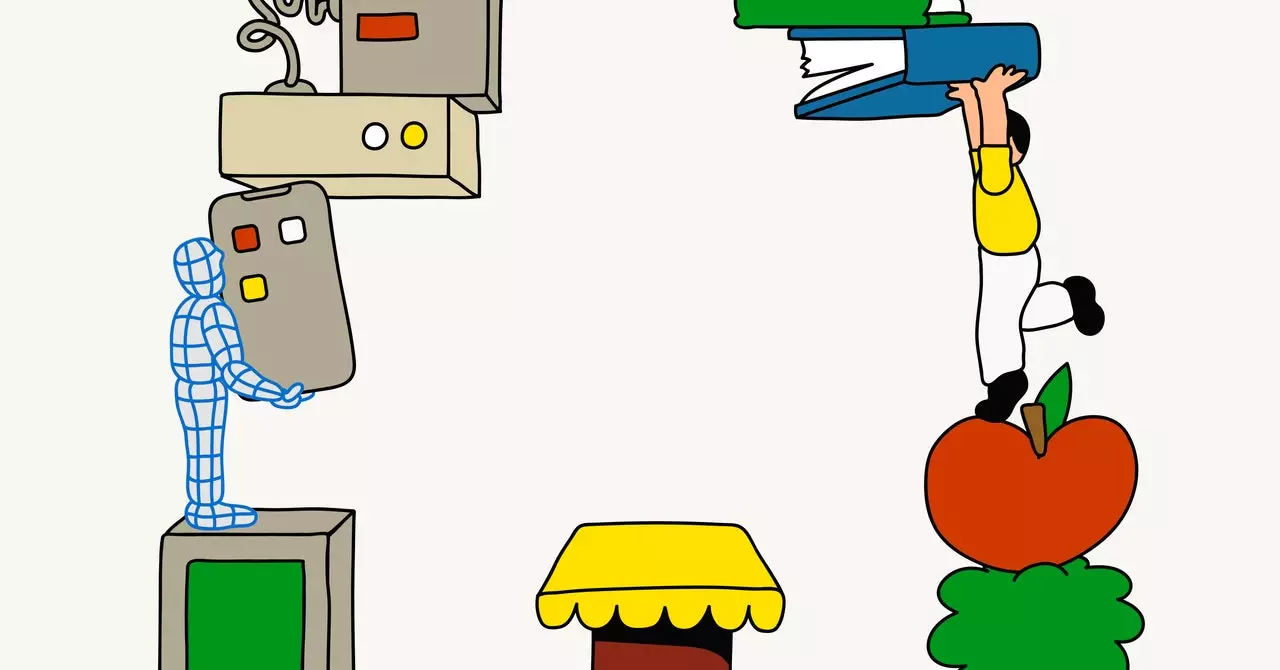The organizational landscape has remained relatively unchanged since the inception of the organizational chart in the mid-19th century. These hierarchies are characterized by clear layers of management and decision-making structures, reflecting humanity’s limitations in processing vast amounts of work-related information. However, we stand at the threshold of a significant transformation, heralded by advancements in artificial intelligence (AI), particularly in the form of large language models (LLMs). As we look ahead to 2025, it becomes evident that the integration of AI into organizational frameworks will not merely enhance productivity at the individual level, but fundamentally redefine how businesses operate.
Historically, AI applications have primarily served as individual tools, augmenting personal productivity in tasks such as writing, coding, and data analysis. Yet, the coming years promise a paradigm shift where AI transitions from a supplementary aid to a central pillar of organizational philosophy and design. Forward-thinking companies are gearing up to innovate their operational structures to embrace symbiotic interactions between human employees and AI systems. This evolution revolves around the notion that AI can amplify human strengths and facilitate new methodologies for communication and collaboration.
Companies equipped with an AI-first approach will likely rise to the forefront of this transition. As startups and established organizations alike venture into the realm of AI integration, we will observe a significant prevalence of “AI-native” businesses that leverage human intelligence and automated processes from their inception. These trailblazing companies will operate with streamlined teams, harnessing AI to streamline operations without the burden of traditional overhead costs.
Unlocking Collective Intelligence
For larger enterprises, the journey to embracing AI will be fraught with challenges but equally replete with potential rewards. These organizations have the capacity to use AI not only to eliminate inefficiencies but also to maximize the capabilities of their existing workforce. A vital aspect of this transition lies in understanding that AI functions more like a human collaborator than conventional software. This realization necessitates that various departments within an organization recognize the value of incorporating AI insights into their specific functions.
The expertise and experience of employees will play a crucial role in harnessing AI’s capabilities. Workers and managers across all tiers will identify practical use cases for AI that enhance their performance, resulting in a democratization of AI usage. Companies that support this shift will likely find themselves at the helm of the organizational revolution, equipped with a workforce adept at utilizing technology to unlock latent insights from AI.
As organizations adapt to an AI-integrated framework, we can expect to see significant shifts in organizational structures. Traditional hierarchical models may give way to more fluid, project-based arrangements that enable teams to assemble and disband according to project demands. In this new structure, AI systems will serve as connective tissues, facilitating collaboration across dispersed teams and streamlining communication.
Furthermore, as middle management evolves, the focus may shift from traditional supervisory roles to more symbiotic functions that emphasize human-AI coordination. This change will necessitate new skill sets within the workforce, preparing employees for collaborative roles where creativity and AI management coexist.
As organizations develop their human- and AI-centric strategies, those that thrive will not merely boast advanced technological tools, but will excel in synthesizing human intuition with artificial intelligence. The core of future business success will lie in the creation of value that is unique to each organization, leveraging the strengths of both human workers and AI systems to solve complex problems and innovate.
In this transformative landscape, it is crucial for companies to recognize that the future is not solely about adopting AI technologies. Rather, it revolves around reimagining work processes and corporate cultures to foster environments where human and artificial intelligences work in concert. Through this collaboration, organizations can unlock previously unattainable insights and efficiencies, positioning themselves as leaders in an ever-evolving global market.
The next few years will witness unprecedented changes in organizational structures, prompted by advancements in AI technology. As companies embrace these innovations, they will need to adapt to new ways of working that prioritize collaboration between human intelligence and AI. Ultimately, those organizations that successfully navigate this transition will not only enhance their operational efficiency but also pave the way for a future where AI and human talent coexist to create remarkable results. Embracing this change will be crucial to thriving in a world increasingly shaped by artificial intelligence.

